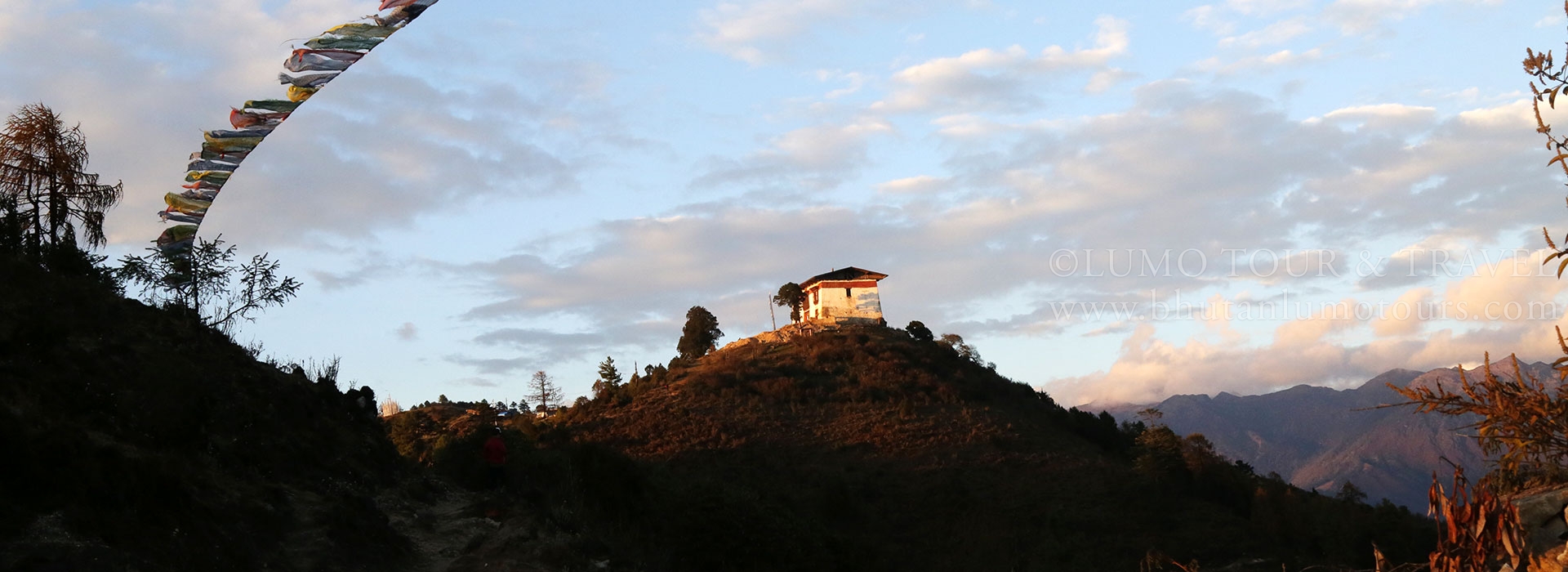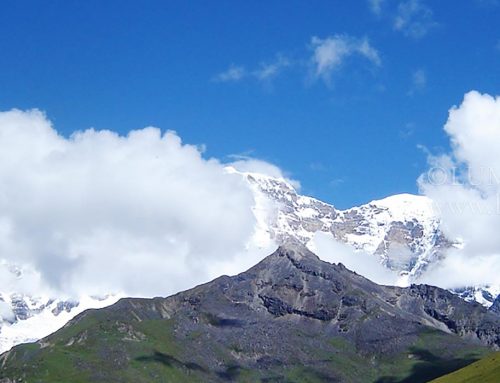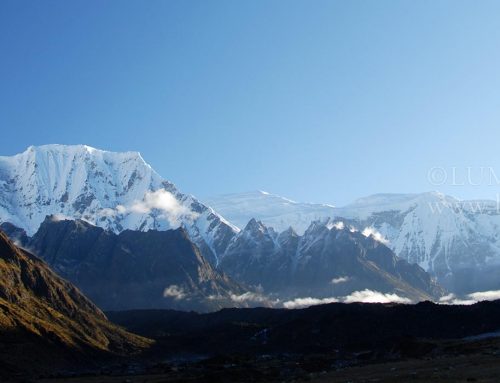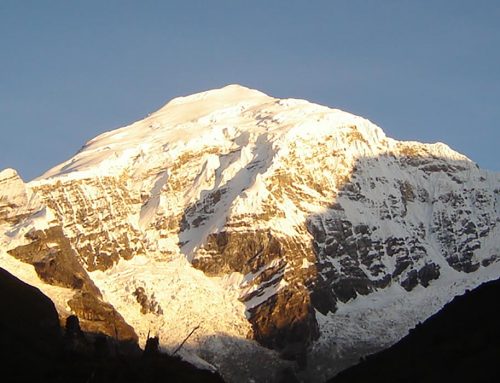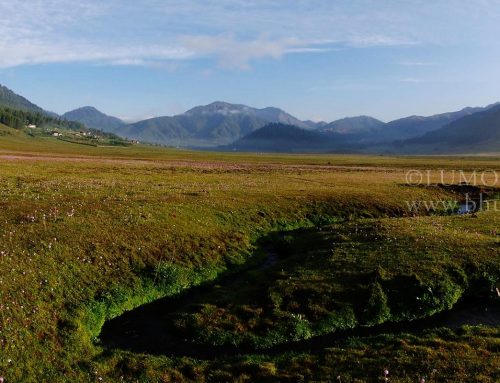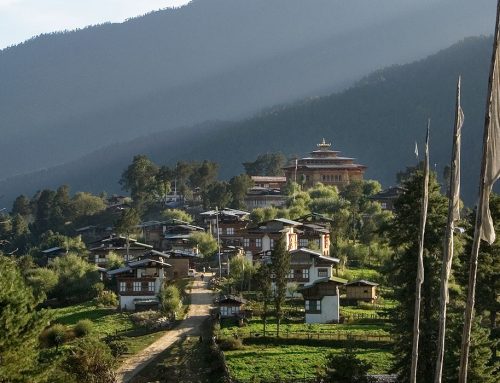- Duration: 10 nights / 11 days.
- Accommodation: Hotels, Resorts and Tents.
- Activity Type: Walking, Trekking & Tour.
- Difficulty Level: Moderately Strenuous.
- Highest Point: 4210 meters
- Trek Distance: 75 km
- Group size: Minimum 2 pax
- Best Months for the Trek: March – June, September – 2nd Week of December.
- Excursion to the famous Tiger’s Nest – Taktsang Monastery
- Visit Drugyal Dzong/Victory Fortress (built in1644), Kichu Monastery (built in 7th century), and the National Memorial Chorten
- Visit the tallest Statue of Buddha in Bhutan
- A panoramic view of the Higher Himalayas from the Dochu La Pass (3140m)
- Visit Punakha Dzong (built in 1637) and Chimi Lhakhang – “The Temple of Fertility”
DAY 01. ARRIVE AT PARO, 2280 METERS, BY DRUK AIR:
The flight into Paro is a befitting introduction to the spectacular beauty of Bhutan. In clear weather, you will be able to see some of the world’s highest peaks as you fly into Paro. As the aircraft prepares for landing, you will be surrounded by the lush green valleys. On landing, your Bhutanese escort from Druk & Drukpa Travel will greet you at the exit terminal, and then drive you the short distance to the hotel. After lunch, we will drive you to the ruins of the Drukgyal Dzong (Victory Fortress) 16 km up the valley. Built in 1647 by the great Zhabdrung Ngawang Namgyel, father and unifier of medieval Bhutan, the dzong was destroyed by fire and has been in ruins since then – an evocative reminder of the great victories it was built to commemorate. On a clear day you will see an unforgettable view of Mt. Jhomolhari (7,314 m), the highest unclimbed peak in the world. On the way back, visit Kichu Lhakhang that was built in 659 AD by the Tibetan King Srongsen Gampo. In the evening, you are free to stroll in the town. Overnight in a hotel.
DAY 02. PARO, 2280 METERS: EXCURSION TO TAKTSANG MONASTERY:
After breakfast a short drive will take you to Satsam Chorten, from where you start your 2-hour hike to view the spectacular Taktsang (Tiger’s Nest) monastery. The trail climbs through beautiful pine forests. You will stop for a rest and light refreshments at the Taktsang Zakhang (cafeteria) and then walk a short distance until you see, clearly and seemingly within reach, the famed Taktsang Monastery. Built in the 1600s, this incredible monastery clings to the edge of a sheer rock cliff. It is said that Guru Padmasambhava, the tantric mystic who brought Buddhism to Bhutan, came to Taktsang riding on a tigress. Lunch will be served at the cafeteria, followed by the walk back to Satsam Chorten. After lunch, visit Ta Dzong (built in 1656 and renovated in 1968), an ancient watchtower, which now houses the National Museum. Below the museum is the Paro Rinpung Dzong (literally meaning “Heap of Jewels”, built in 1646 by Zhabdrung Ngawang Namgyal, the centre of civil and religious authority in this valley. Dinner and overnight in a hotel.
DAY 03. PARO – JELE DZONG (START OF TREK):
It is a short trek to Jele Dzong. The trek begins above the National Museum. If the weather is clear the Paro valley and the snow-capped mountains surrounding the valley can be seen. The campsite is near the old Jele Dzong. If the caretaker is there you can visit the Dzong.
Altitude 3560m; Distance 10 km; Time 4 – 5 hours; Ascent 1090 meters.
DAY 04. JELE DZONG – JANGCHULAKHA:
The trek starts with a short climb and then passes through a thick alpine forest of rhododendron and gradually climbs till we reach camp. You may see yak herders around your campsite.
Altitude 3770m; Distance 10 km; Time: 3 – 4 hours; Ascent 310 meters, descent 50 meters.
DAY 05. JANGCHULAKHA – JIMILANGTSO:
The trail follows the ridge and on a clear day the views of the mountains and valleys are beautiful. Our camp is close to Lake Jimilangtso. These lakes are known for giant trout, and if lucky, you may enjoy well-prepared trout for dinner.
Altitude 3870m; Distance 11 km; Time 4 hours; Ascent 330 meters, descent 230 meters.
DAY 06. JIMILANGTSO – SIMKOTA:
The trail takes you through dwarf rhododendron trees past the lake of Janetso. Overnight in a camp.
Altitude 4110 meters; Distance 11 kms; Time 4 hours; Ascent 820 meters ascent, descent 400 meters.
DAY 07. SIMKOTA – PHAJODING – THIMPHU:
From here we slowly descend down to Phajoding Monastery from where Thimphu town is visible at the valley floor. After lunch we drive to the Institute of Traditional Medicine where medicines are prepared according to ancient practices. Then we will visit the Takin Preserve Center and Sangay Gang View Point and then see the tallest statue of Buddha in the region. Overnight in a hotel.
Altitude 2520 meters; Distance 15 km; Time 6 – 7 hours; Ascent 130 meters ascent, descent 1820 meters.
DAY 08. THIMPHU SIGHTSEEING:
The day begins with a visit to the National Memorial Chorten built in the honor of the late King Jigme Dorji Wangchuk and the Dupthop Lhakhang, one of the few surviving nunneries in Bhutan. We then visit the National Library, which is stocked with ancient Buddhist manuscripts, and the Painting School where traditional art is still kept alive through instructions in the art of painting Thangkas (sacred Buddhist religious scrolls). After lunch, visit the Handicrafts Emporium followed by shopping for souvenirs in the shops of Thimphu. In the evening, visit the Tashichhodzong, seat of the national government and the Central Monastic Body. Overnight in a hotel.
DAY 09. THIMPHU – PUNAKHA (72 KMS, 3 HOURS DRIVE):
After breakfast, we will drive to Punakha via Dochula Pass. If the weather is clear, we will stop for a while at Dochula Pass to view the higher Himalayas. Lunch will be served at Punakha. After lunch, you will visit Punakha Dzong built in 1637 by Shabdrung Ngawang Namgyal and located on a narrow spur of land between Pho Chu (Male River) and Mo Chu (Female River). For many years until the time of the second king, it served as the seat of the Government. The construction of the Dzong was foretold by Guru Rimpoche. There was a smaller building here called Dzong Chu (Small Dzong) that housed a statue of Buddha. It is said that Zhabdrung ordered the architect, Zowe Palep, to sleep in front of the statue, while Palep was sleeping, the Zhabdrung took him in his dreams to Zangtopelri and showed him the palace of Guru Rinpoche. From his vision, the architect conceived the design for the new Dzong, which in keeping with the tradition, was never committed to paper. The Dzong was named Druk Pungthang Dechen Phodrang (Palace of Great Happiness). Punakha is still the winter residence of Je-Khenpo. In the evening, you will visit Chime Lhakhang, which was built by Lama Drukpa Kuenley, also known as the Divine Madman. The Temple is also known as “the Temple of Fertility”. Overnight in a hotel.
DAY 10. PUNAKHA – THIMPHU – PARO:
After breakfast, we will drive to Paro via Thimphu. Lunch at Thimphu. You will be left free in the afternoon for shopping. In the evening, we drive to Paro. Overnight in a hotel.
DAY 11. DEPARTURE:
Early morning drive to the airport and farewell.
Optional activities that you can add in the program:
- Farm House Visit.
- Excursion to Chelela pass.
- Hike to Dzongdrakha.
- Hike to Tango/Cheri Monastery.
- Mountain biking in Thimphu.
- Rafting in Pho Chu (Punakha).
Cost inclusive of:
- All Meals [Breakfast /Lunch/Dinner]
- Accommodation [Twin Sharing] Single Room Supplement Extra US $: 40 per room per night.
- All transportation within the country including airport transfers.
- Royalty & Govt. Taxes
- Entrance fees for Museums and Monuments only
- Visa Fee
- Airport tax
- Contribution to Tourism Development Fund
- Guide
- Sightseeing
While on trek, cost covers:
- Nature Recreation and Ecotourism Division (NRED) Nu.1000
- 3 meals a day
- Service of cook & helper
- Guide, sleeping tent
- Mess Tent, Kitchen Tent & Toilet Tent
- Ponies to carry supplies
- Royalty
- We will provide you with sleeping mats but you have to bring your own sleeping bags.
Cost exclusive of:
- Druk Air fare
- Insurance Premiums
- Payments for service provided on a personal basis
- Cost for any services not mentioned in the “Cost Include Head”
- Cost incurred due to mishaps, strikes, political unrest, etc.
- Personal expense in items such as laundry, soft drinks, camera charges, bottled water, incidentals, portage, bellboy charges, tips or any other services
Personal clothing: strong normal clothing (according to season). Preferably cotton, even for summer, woolen clothing for the evening and winter.
For Trekking, one must bring:
- Strong comfortable trekking boots – water-resistant for the rainy period of June-August
- Sunscreen
- Flash light
- Rain coat (especially for rainy period – June-August)
- Head gear/hat/cap for sun and rain protection
- Water pills – for extra caution in purifying stream; (boiled water is provided at all times during the trek)
- Aspirin – incase of altitude sickness
- Lots of socks
- Warm clothes
OPTIONAL ITEMS
- Sunglasses
- Headgear
- Folding umbrella (only for wet months — July and August)
- One towel
- Pillow case
- Wet-packed tissue paper
- Pillow


